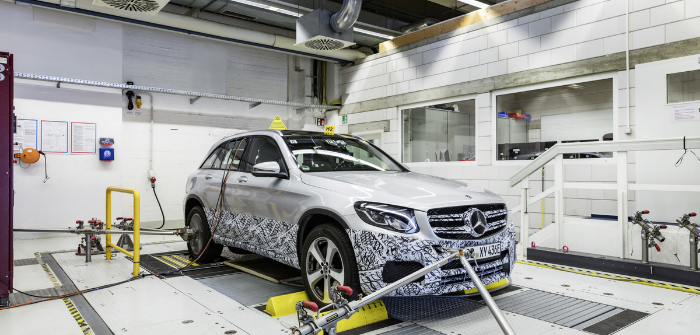With the Mercedes GLC F-Cell SUV unveiled at Frankfurt this week, Daimler has revealed the extensive testing process the first production plug-in hydrogen-powered car was put through
In an industry first, the SUV gets a hydrogen fuel cell as well as a large lithium-ion battery that the company says will give the vehicle a combined driving range of close to 500km. And when the hydrogen runs out, the tank can be refilled in under three minutes.
The 9kWh battery that is mounted toward the rear of the F-Cell will provide around 50km of driving, while the fuel cells are 30% smaller than any previous incarnation, meaning the tanks will squeeze into the engine compartment.
Although the first plug-in hydrogen vehicle is only just hitting the streets, Daimler has built up 18 million kilometers in testing since 1994, while the GLC F-Cell has undergone 200 tests throughout its development, producing 1,800 tons of water as its only waste product.
Daimler will start development and testing on the computer. Long before the first prototype is built, virtual world simulations are used for fire crash tests, aerodynamics analyses and chassis tests, meaning that the possibility of expensive mistakes can be reduced.
As the car reaches the complete test vehicle stage, a series of test rigs will assess the intensive function and fatigue of key components. Before then, the hydrogen fuel cell is put through its paces at The Fuel Cell Centre of Competence, in Nabern, Germany.
Once the GLC F-Cell has reached this stage, the SUV is sent to The Vehicle Safety Technology Centre for crash testing, alternative powertrain testing and vehicle-to-vehicle testing, and for the design of assistance systems.
Daimler then takes the GLC to the Mercedes-Benz Technology Center in Sindelfingen for aerodynamic finishing touches. The technology at this site means that the SUV can be tested in extreme weather environments, with the ability to manipulate temperature from -40°C to 60°C and create hurricane wind speeds of up to 265km/h, tropical downpours, and heavy snowstorms.
Once the first prototypes are ready, summer and winter road testing will begin, driven on more than 500 individual tests over proving grounds in Spain, Sweden and Germany.
With concerns around the safety of new technology such as hydrogen fuel cells, engineers paid special attention to the integration of components such as hydrogen tanks, gas seals, valves and the high-voltage components.
Thanks to subframe protected hydrogen tanks that are installed in the crash protected area between the vehicle axles, as well as multi-stage valves and protective circuits for the high-voltage system, Daimler has managed to achieve safety in the GLC F-Cell that is comparable to that of conventional vehicles, meaning the OEM’s new generation SUV complies with both statutory and in-house standards.
The Mercedes GLC F-Cell has been 23 years in the making, from Daimler’s first steps into hydrogen fuel, to the world’s first production hydrogen fuel cell plug-in, it is the company’s testing program that has made it possible. Finally, in Frankfurt, the OEM has been able to show off the fruits of its labor.
September 13, 2017


